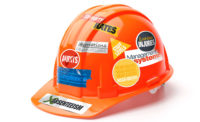Why should employee safety and health be any different? It’s time that key safety and health metrics come out of the closet and have the full spotlight of public disclosure turned on them. Besides the public — who might be quite interested in the ongoing safety performance of the local business where fathers, mothers, brothers and sisters earn a paycheck — employees, managers, regulators and EHS professionals all could benefit from the transparency of safety and health information.
Green reporting
In 1998, Carol Browner, then-U.S. EPA administrator, summarized the power of transparency by noting, “Putting high quality environmental information into the hands of citizens is one of the most powerful tools for protecting public health and the environment in our communities.†Both in the U.S and around the world there is a vast array of required reporting of chemical storage and releases into the environment. Contrast your organization’s candid public reporting of environmental metrics with the amount of candid public reporting of safety and health metrics.There are very limited mandates to report any safety and health metrics even to regulators, let alone the public. Consequently, safety and health struggles to remain on the radar. And there is still strong resistance, even in today’s transparently digital world, to voluntarily post safety and health metrics on the Internet for the public, with the exception of a small but growing group of socially conscious and sustainability-oriented companies.
In some organizations the idea has taken hold that collecting safety and health metrics in a globally consistent electronic fashion will lead to better safety and health management. Plus, making those indicators of success available to the public demonstrates confidence in the skill and expertise of its workforce. These high-performing organizations use leading indicators of safety and health performance and realize that transparency for this data is important, not just for management but key company stakeholders. They understand the value of the “spotlight effect,†which means putting an external spotlight on how well management does its job.
Window dressing?
Some companies resist transparency by claiming there is no interest outside the organization for this information, and that transparency is not a window, but window-dressing. But in the financial arena, stockholders expect and demand transparency. Think of all the effort that goes into managing those numbers. Couldn’t consumers of safety and health data drive a company’s safety and health performance just as strongly?And isn’t it likely that there would be more voluntary OSHA compliance if employers knew OSHA and the public were aware of the transparency of their performance? Great performing organizations could be rewarded and poorly performing organizations could be identified and strongly encouraged to voluntarily correct problems through greater use of the more efficient OSHA consultation resources. Naturally, transparency can’t cure all ills. If performance doesn’t improve after consultation, or if complaints are repeated after consultation, rapid non-negotiable enforcement should result.
A critical mass of safety and health professionals needs to start asking the question: “Why don’t we make our organization’s safety and health performance transparent?†Stockholders might learn to believe the safety and health professionals’ mantra that good safety performance is an indicator of good management. Municipalities might be interested in the safety performance of a company seeking local redevelopment subsidies to relocate in their town. Insurance companies might benchmark safety performance of industry sectors or geographic areas.
Transparency means the information is available before it is obvious who wants it, or why it is needed, so there are going to be many other creative possibilities. A mass market for safety and health transparency will have the most power to make the workplace safer.
